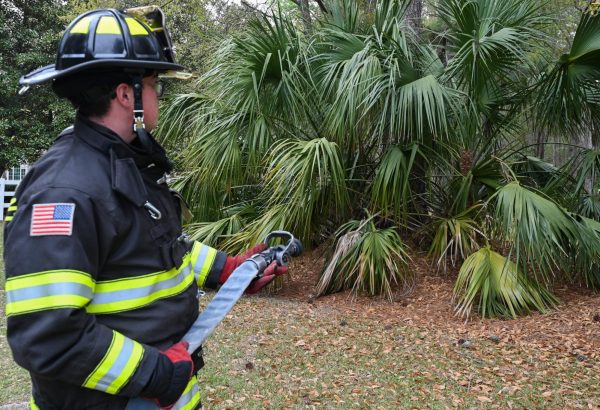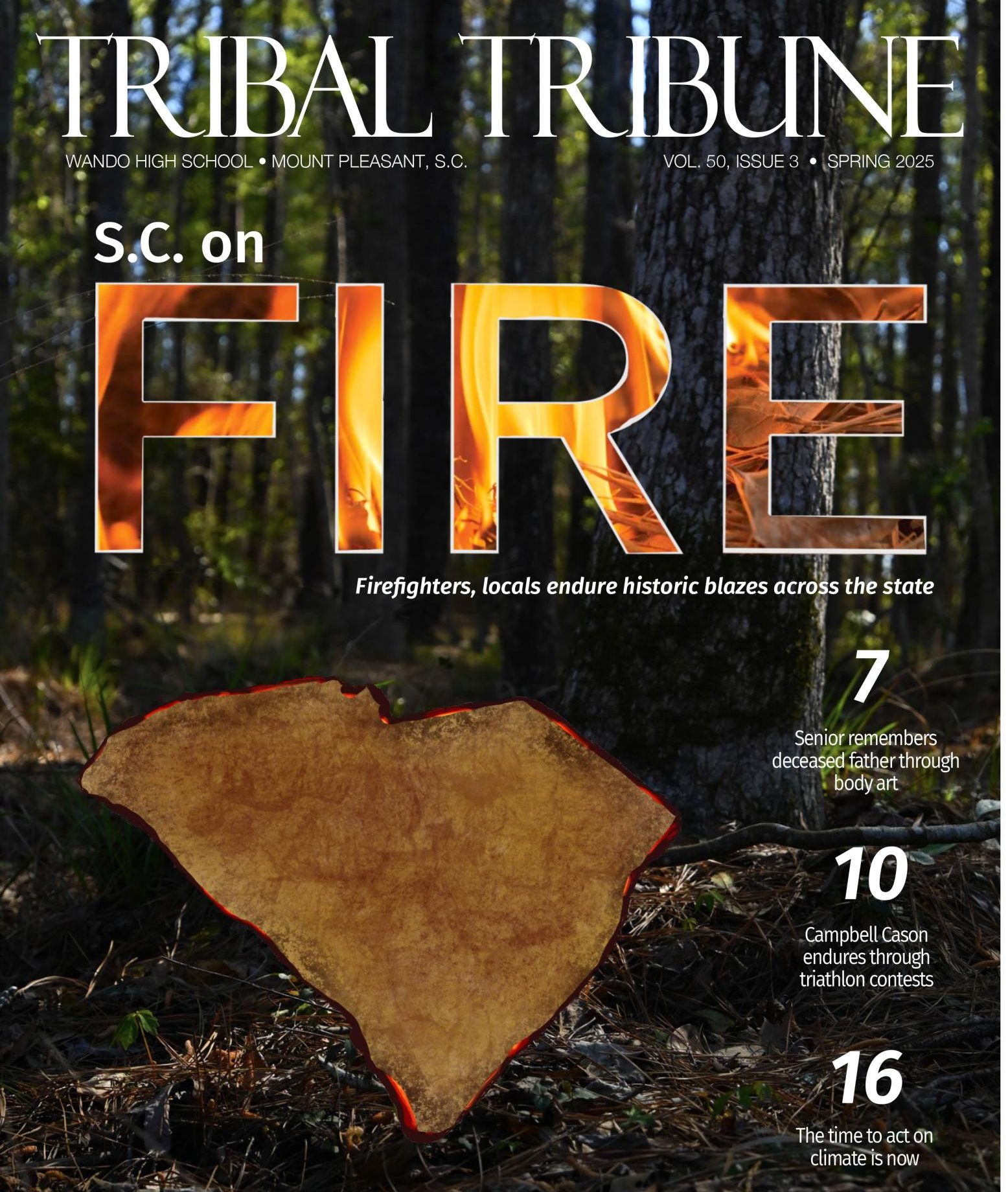As the raging inferno reached colossal tree top heights, it grew closer, eventually towering down upon fellow firefighters and the houses they were now engulfing with unfathomable volumes of water.
This experience is one that Awendaw-McClellanville Deputy Fire Chief Brett Sims encountered soon after he and his department were called upon to aid in battling South Carolina’s Horry County wildfire in March.
“We got called up on Saturday night, I think that time was around 6 p.m., our crews were actually working in a fire in the Francis Marion Forest when that call came out,” Sims said. “We [had] to get a few people in, and that night there were six personnel that we were able to assemble in a matter of an hour.”
Despite the late call and the Francis Marion fire, crews were still able to dispatch that night.
“We were able to take our crews up once we got our fire contained… so they got up to Horry County at about 10 or 11 on Saturday night,” Sims said. “The first step is… the logistics of the personnel, getting all their equipment, getting them food, so they have to have enough food to just sustain themselves for 72 hours.”
Unbeknownst to the firefighters, they had far more than 72 hours of work ahead of them.
“We started in North Myrtle Beach on what’s called Water Tower Road, that was a separate fire for about three or five hundred acres and we ended up working in Horry County from Saturday night all the way to the following Saturday morning, so we were up there for a week in total,” Sims said.
During that week at the Horry County fires, the firefighters discovered another adversary separate from the fire.
“Normally… on a wildfire of any… big scale we work 12 hours on and 12 hours off, so let’s say you woke up and… you hit the line at 8 o’clock in the morning, that means you would come off at 8 o’clock at night,” Sims said.
However, this was not the case for Sims, as Horry County’s jurisdiction has a very unordinary fire schedule.
“In Horry County, they ran four hours on four hours off… if we go out at 9 o’clock in the morning, that means we work from nine… to one, come off the line at one and then we have to go get food at rehab, we have to drive back to staging… We have to refill our apparatus, and then we have about an hour of sleep in a rack before we have to get back up again,” Sims said.
This had a detrimental effect on the the sleep schedule of the firefighters.
“I mean, before you know it you blink your eyes and it’s time to go back out, so not a lot of sleep especially for our men and women were out there for seven days total,” Sims said. “I was up there from Tuesday until Saturday morning, I got a cumulative total of four hours [of sleep].”
The crew was hardly alone, though.
“[The operation is] complex, there’s a lot of pieces to it… our state firefighter mobilization was launched in an effort to assist Horry County, that came with over… 49 different departments and over 320 different types of fire apparatus,” Sims said. “We were working alongside people that we had just went up and helped during Hurricane Helene in their own area… so it’s all a common goal.”
The group effort was not limited to the ground, either.
“We had an air ops branch… they had a National Guard Chinook, so that’s the big dual blade heavy lift helicopter that had… a Bambi bucket, it’s a big orange bucket and they can dig in water and then drop that water, and they also had a National Guard UH-60 Blackhawk helicopter with the same thing,” Sims said.
Aid was not limited to national reserves, either.
“[They were] assisted by two scooper planes, the scooper planes come out from up north, I believe it’s Canada… they’re able to land in the intercoastal waterway and scoop up… about 800 gallons at a time and then do airdrops,” Sims said.
The fire began as an ember from a backyard that floated to a wildlife preserve, from there flames quickly spread.
Mount Pleasant Fire Chief Mike Mixon is another expert in the prevention and process that results in the exigence of wildfires.
“Especially around this area and we have a lot of pine trees, we have wax myrtles a lot of like hot resonance fuels. That can burn pretty quick and pretty hot and you know get moving, especially if they’re wind driven, they can get away from you quick,” Mixon said.
The initial process of fighting a wildfire of that size is defensive.
“[For] all the bigger [fires]… [we’ll] call in the plows for the service just to cut a line through there… they’re knocking trees over… they’re turning up the dirt to try to get some of that leaf litter and the pine straw and the smaller stuff [out of the way],” Mixon said. “Debris wise… you essentially kind of create a road so when that fire is burning on the forest floor, once it hits that fresh turned dirt, hopefully it’ll stop right there.”

While that process was used by the fighters at the Horry County fire, some obstacles remained to be dealt with.
“With that being said, the problem in Horry County is, they have a different landscape of peat moss… peat moss is just layer upon layer upon layer of moss, pine straw, decayed leaf, and so… it doesn’t burn hot and bright, it’s small and so it smolders underground, it can crawl underground and you can never see it, and it can rear its head back up… hundreds of feet away from where that initial fire was so that makes it a little bit more difficult,” Sims said.
Despite the numerous difficulties of the process, the firefighters had a dedicated ally throughout the entire statewide battle against the inferno.
“The community really rallied around the first responders, that’s more… than what you would see anywhere else in the state. There… was not a place that we went where we were not supported; we had churches that opened their doors to us and fed us like kings and queens… you could go to Dunkin’ to grab a cup of coffee, it’s free, go to Starbucks, it’s already paid for,” Sims said. “People [were] driving around neighborhoods… handing over jugs of… hot coffee, and donuts, and breakfast sandwiches, and cookies, and I mean shirts, and… socks, whatever you wanted, that community provided for you.”








